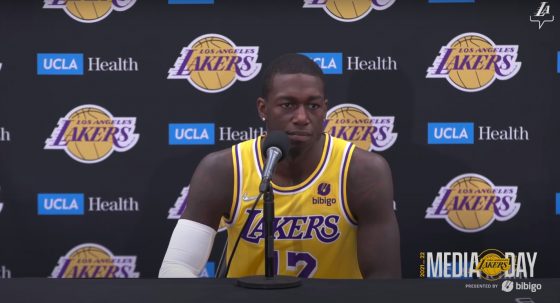It’s X’s and O’s Week here at CelticsBlog, and with that, I get the chance to nerd out. Who am I kidding? I nerd out after every game! But, there hasn’t been any basketball recently, so here we are.
One of the most prevalent actions throughout the NBA is what’s known as a ‘zoom’ action, but you may have heard it be called ‘Chicago’ or ‘Pistol’ (not to be confused with the 21 series). In its purest form, a zoom action is a corner/elbow pin-down into a dribble hand-off above the perimeter. The logic behind this set is simple: it puts pressure on the corner man’s defender.
In a basic zoom set, as the pin-down is initiated, the screen receiver’s defender has to navigate the initial screen while the screen receiver is running towards a dribble hand-off from the big man atop of the perimeter (also known as a delay). Suddenly, the screen receiver’s defender has two screens to navigate, while the screen receiver has the ball in a position to either shoot or drive middle.
Ok, I’m almost certain you recognize this action now that you’ve seen the above clip – it’s ubiquitous throughout the league. Of course, some teams like to diversify this by having the screen receiver and initial screener split cut to confuse the defense, or perhaps a hand-off never occurs, but rather a ghost screen — you can see the possibilities that arise.
Yet for the Celtics, they decided to go with a more subtle adjustment, one that has been growing in prevalence throughout the European leagues. Boston chose to initiate the hand-off around the elbow.
Imagine if you drew two diagonal lines from the elbows to the sideline, as demonstrated in my below masterpiece.
As long as your toes/heels are on or near one of those imaginary lines, the principles of this adjustment work just fine. Yes, it works better the closer to the elbow you get, but we live in an imperfect world, and sometimes close is close enough.
So, why is initiating the handoff around the elbow so beneficial, I hear you ask? Here are some of the benefits to running your zoom actions around the elbow:
- By initiating the hand-off around the elbow, you’re forcing the strong side defense to overload the wing/corner area.
- Doing this means there’s more room around the top of the perimeter and plenty of space to drive middle.
- As the screen receiver curls off the hand-off, it places pressure on the weak side defenders to offer help, which in turn creates quality passing opportunities.
- The strong side defense sometimes plays drop in this situation, due to the screen receiver often being a high-level shooter and wanting to contain the big man. As such, the big man in the action can roll towards the rim, and occupy the ‘tagger’ and the defending big at the same time – thus creating an easier lane to the rim for the ball handler.
- Weak side ‘45 cuts’ and backdoor cuts can open up easy passing lanes off the dribble.
For Boston, they can also look to have the big man flow into a secondary screening action or operate as a ‘popper’ due to the presence of both Al Horford and Luke Kornet – two reliable three-point shooters for their position. Yet, it seems that Ime Udoka is happy to let his team utilize the set as they see fit, in a read-and-react manner — as long as the principles of getting the big towards the elbow, and compacting the defense are both met, you can flow out of the action however you deem necessary at the time.
Let’s look at an example together. We see Derrick White hit Al Horford with a post-entry pass and then relocate to the weakside corner. Horford initiates a second side action by driving across the free-throw line to provide a hand-off at the elbow, while Marcus Smart springs Jayson Tatum out of the corner with a pin-down.
Note how condensed the Warriors’ defense is at this point. You have three bodies defending the action, Stephen Curry is cheating off Derrick White to offer help should Tatum drive, and Gary Payton II is a few steps off of Jaylen Brown, again to be in a helping position.
Tatum opts to shoot the three from this position, but he had multiple options available to him. There was a left-hand drive towards the rim, a curl over Horford towards the top of the perimeter, and of course, the jump shot he opted to take. All of those options were good choices, as Boston forced the Golden State Warriors to overload on the action, creating multiple pockets of space on the floor, and it all happened by Horford opting to initiate a simple DHO on the elbow.
Encouragingly, it’s easy to imagine the Celtics running this play throughout the coming season, but placing Malcolm Brogdon in the weak side corner instead of White, and then it would be interesting to see if the weak side low man (Curry in this instance) is still willing to cheat off their man — because if they don’t, we’re going to see some easy drives to the rack out of this action next season. And yes, the same can be said if Udoka chooses to replace White with Danilo Gallinari, too!
Overall, Udoka has taken a well-known action around the NBA and incorporated a slight wrinkle while also allowing his star players to sprinkle those possessions with a little bit of flare. Now, with two added offensive threats, that same wrinkle is only going to evolve further, and that’s something to be excited about heading into the new season.






